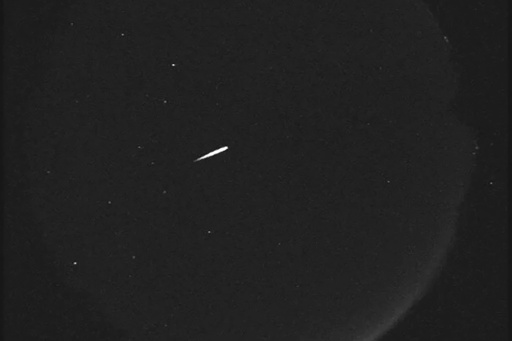
WASHINGTON — The Orionid meteor shower, one of the two prominent meteor displays originating from Halley’s comet, is expected to reach its peak early Monday. However, observers may find it challenging to see the meteors due to a bright waning moon that is currently 83% full.
The intensity of the Orionid meteor shower can vary greatly from year to year. In some years, it dazzles skywatchers with a vibrant display reminiscent of fireworks, while in other years, it may be much less impressive.
According to NASA’s Bill Cooke, this meteor shower can yield between 20 to 60 meteors per hour under optimal conditions. The shower itself is active until November 22, providing ample opportunity for skywatching.
So, what exactly is a meteor shower? It is an annual phenomenon in which numerous meteors are visible in the sky, and viewers do not require any special equipment to enjoy the spectacle.
The majority of meteor showers are caused by the remnants of comets. The Orionids specifically come from Halley’s comet. When space debris, whether as small as a dust particle or as large as a boulder, enters Earth’s atmosphere, it creates friction with the air, causing the material to heat up. This results in a glowing aura around the meteors, often leaving a brief, fiery trail akin to a shooting star.
Cooke notes that Halley’s comet does not consistently release the same volume of particles each year, which complicates predictions regarding the number of meteors that will be visible during the shower.
For those hoping to catch a glimpse of the meteors, the best viewing times are usually between midnight and the early morning hours. Observers will have a better chance of spotting shooting stars in darker skies, far removed from urban light pollution. Clear nights with a minimized moonlight create ideal conditions for viewing meteors. For optimal night vision, Cooke advises against using smartphones, as they can hinder one’s ability to see the meteors.
October has proven to be an exciting month for skywatchers, featuring events like the recent supermoon and the appearance of comet Tsuchinshan-Atlas. A meteor society keeps an updated schedule of significant meteor showers, including information on peak viewing days and moonlight conditions. Following the Orionids, the Southern Taurid meteor shower will peak in early November, providing another opportunity to enjoy the wonders of the night sky.

